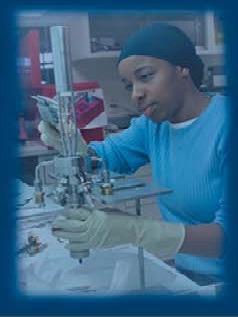The gender gap in chemistry is easily illustrated by National Science Foundation (NSF) statistics indicating that in 2000, 47% and 33%, respectively, of chemistry B.S. and Ph.D. students were female. According to a Chemical and Engineering News survey, for the year 2005, only 13% of chemistry faculty were women [2]. (Th e full C&EN 2005 survey is given as Appendix I.) This disparity was among the largest of all fields surveyed. In fact, only in mathematics was the attrition rate from undergraduate status to the tenure track signifi cantly higher than in chemistry. This is, at the very least, an ineffi cient deployment of one of the United States’ greatest national assets: the widely acknowledged superiority of its research and higher-education establishments. With the estimated cost of training a Ph.D. chemist approaching $500,000 per person—much of it supplied by Federal government agencies—attrition of high-achieving women from the chemistry profession represents a significant loss of return on human capital investment. Academia’s loss of considerable female intellectual talent to industry or other professions suggests that perhaps something about the academic environment is less appealing to women than it ought to be. Indeed, both women and men are increasingly opting out of academic careers in chemistry, resulting in a significant draining of talent. To begin to address these concerns, offi cials of the National Science Foundation (NSF), Department of Energy (DOE), and National Institutes of Health (NIH) approached leaders of the chemistry community with the idea of bringing together the chairs of the major research-oriented academic chemistry departments. A year of planning by academic leaders and government agency representatives (see Appendix II) culminated in a workshop titled “Building Strong Academic Chemistry Departments through Gender Equity.” Participants included 55 chemistry department chairs and/or representatives from the major research universities and 60 other academic, government, and national chemistry leaders. Th e workshop, held from January 29 to January 31, 2006, in Arlington, Virginia, began by examining the underlying causes of the gender gap in chemistry departments throughout the country, proceeded through several breakout sessions that discussed and analyzed these factors, and concluded with a set of specific recommendations for action to remedy the problem [3]. Participation by the agency directors responsible for research support for chemistry and department chairs ensured that the people responsible for the future of academic chemistry could participate in coming to a consensus about the nature of the problem and the way toward a solution.

| nsf_genderequity_reportcover.pdf | 2.47 MB |

